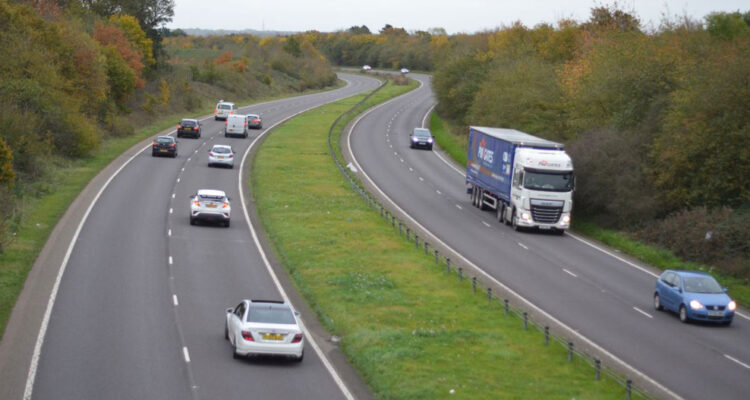The Government is facing mounting pressure from road and vehicle safety campaigners, industry leaders and the public to adopt the European Union’s latest Vehicle General Safety Regulation (GSR) standards into the UK’s Type Approval framework. The changes would mandate a suite of advanced technologies—already compulsory across the EU—that are proven to prevent collisions and save lives.
At the heart of the call is a simple argument: every month of delay means avoidable deaths and serious injuries on Britain’s roads. More than 40 organisations, led by road safety charity Brake, have now united behind the campaign urging Transport Secretary, Rt Hon Heidi Alexander MP to act.
The Cost of Delay
The EU introduced its GSR package in July 2022, making safety features such as automatic emergency braking (AEB), intelligent speed assistance (ISA), and driver drowsiness detection mandatory in all new cars and vans. These measures have been widely praised for their effectiveness in reducing collisions involving both drivers and vulnerable road users.
In contrast, the UK has yet to mirror those standards. Vehicles sold domestically are therefore at risk of being less safe than identical models offered in Europe. Safety experts estimate that adopting the GSR framework could prevent around 1,700 deaths and 15,000 serious injuries over the next 16 years. The overall social and economic benefits could exceed £7 billion, largely through reduced NHS, emergency service, and insurance costs.
As Brake CEO Ross Moorlock put it: “With the evidence, the technology, and the public all on side, the only missing piece is Government action.”
“Adopting these regulations will save lives, prevent injuries, and reduce the devastating impact of crashes on families and communities.”
His words reflect a frustration shared by many across the road safety community who see the UK falling behind global best practice despite once being a leader in this area.
Public Support for Safer Cars
Recent polling suggests there is overwhelming public appetite for stronger safety regulation. A survey conducted by Brake found that nearly nine in ten motorists consider a vehicle’s safety rating a key factor when making a purchase. Two-thirds of respondents said they would be willing to pay more for additional safety features, while a similar proportion believe technologies such as automatic emergency braking and intelligent speed assistance should be mandatory on all new vehicles.
These figures counter claims that drivers prefer cheaper, stripped-back vehicles over safer ones. The majority are not only aware of the benefits but actively want protection systems that help prevent crashes in the first place.
What’s Holding the UK Back?
The main obstacle appears to be legislative inertia. Updating the Great Britain Type Approval scheme requires political commitment, but the technical and regulatory groundwork already exists. Industry observers have noted that the Government acted swiftly when introducing the Automated Vehicles Act, showing that complex transport reform is achievable when prioritised.
There are also cost concerns from some manufacturers, who argue that mandating advanced systems could raise vehicle prices. Yet the data suggests otherwise. With high consumer demand for safety and long-term financial savings from fewer collisions, the cost-benefit equation strongly favours adoption. Aligning UK standards with the EU would also prevent manufacturers from producing downgraded models solely for the British market—a scenario that undermines consumer confidence and global competitiveness.
Why It Matters for Fleets
For operators running large fleets, the implications are significant. Safety technology such as AEB and ISA not only protects drivers and vulnerable road users but also reduces downtime, repair costs and insurance premiums. The introduction of mandatory driver monitoring systems could also complement existing telematics platforms by identifying fatigue-related risks earlier.
Fleet operators already adopting these systems are reporting measurable gains in incident reduction and driver retention. Bringing all new vehicles up to the same specification through national legislation would accelerate that progress and ensure consistency across mixed fleets.
A Roadmap to Reform
Campaigners are calling for a clear timeline for implementation, allowing manufacturers and fleet buyers to plan accordingly. They argue that the UK should at least match the EU’s 2022 standards before looking ahead to the next wave of safety requirements expected in 2026, which include enhanced crash protection and connected-vehicle technology.
There is also an appeal for greater transparency. By publishing annual progress data and impact assessments, the Government could demonstrate how these measures translate into lives saved and costs reduced—building public trust and accountability along the way.
A Vision for Safer Roads
The UK has an opportunity to reaffirm its global standing in vehicle safety by adopting proven, life-saving technologies already in use elsewhere. Doing so would deliver safer roads, healthier communities and fairer competition for manufacturers operating across markets.
As the evidence mounts and public support grows, it is increasingly difficult to justify inaction. The message from campaigners, industry and the public alike is consistent: the tools exist, the benefits are clear, and the cost of waiting is measured in lives lost. The Government’s next move will decide whether Britain continues to lead on road safety—or falls further behind.






